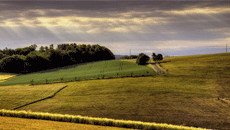
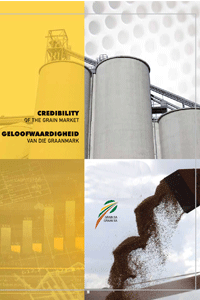
Raising the bar once more in trying times, and due to the COVID-19 pandemic and regulations, Grain SA is presenting its 2021 Annual Congress virtually. Acknowledging the importance of connecting with delegates, observers, guests and the media, we aim to make the 1st Virtual Congress as interactive and dynamic as possible.
The Grain SA Congress is taking place on 3 & 4 March 2021. Themed “Credibility of Grain Markets”, it will benchmark the South African grain market internationally and give farmers an opportunity to take a critical look at our own market again.
Paid-up delegates to Congress have received communication to register their participation next week, with the necessary Congress documentation. Following registration, delegates will receive log-in details to the Lumi AGM system which will enable interactive participation and voting.
Delegates are encouraged to also download the Lumi AGM App in the Google Play Store or from the Apple App Store on the links below. This will ensure the voting process at Congress can be done from the convenience of your mobile device. Voting will also be available on the online platform.
 |
Grain SA Member Support 068 174 4820 |
For any enquiries or should you require any support prior to or during Congress, please save the Grain SA Member Support number to your phone. Alternatively you can contact the office on 08600 47246
To familiarise yourself with the Congress Platform, kindly watch the video tutorial below, explaining all you need to know to attend and participate in Congress.
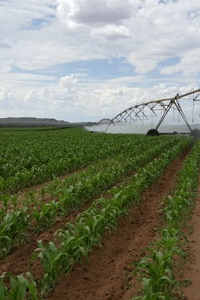
The revised area estimate and first summer grain production estimate was released on 25 February.
Graph 1 indicates that producers have, since last year, expanded with the various summer crops, except for sunflower where a decrease in area planted is observed. This decrease in sunflower is mainly due to producers' concerns about the impact of diseases such as sclerotinia and alternaria on profitability should it occur. The main expansion in the total summer grain area was due to expansions with maize and soybean hectares. It is also a record area planted under soybeans, with the previous record area planted last year.
If the 1st production estimate is studied closer, it is noticeable in the data that the total production of summer crops is 18,477 million tons, compared to last year's total production of 17,606 million tons - an increase of 870 402 tons and an indication of the current season's good general widespread rain that occurred. Maize contributes approx. 85% of the total production, with it also being the second largest expected maize crop to be produced in South Africa. Soybeans have broken another record and it is the largest expected soybean crop ever produced in South Africa.
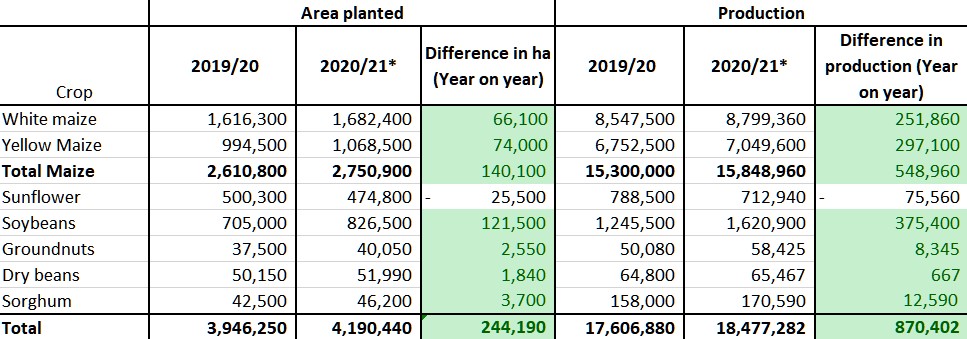
The area planted data is predominately based on information obtained from the Producer Independent Crop Estimation System (PICES), conducted by the National Crop Statistics Consortium (NCSC) for Free State, KwaZulu-Natal, Mpumalanga, Limpopo, Gauteng and North West provinces.
The importance of information provided by producers to the Crop Estimates Committee cannot be overemphasized as the first three estimates (February to April) are largely determined only by producer information through monthly questionnaires completed by them. This means that the current yield figures (1st estimate) are mainly obtained from producers in the different provinces.
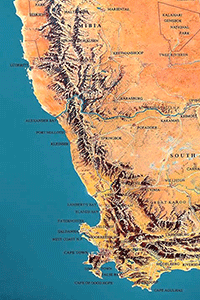
Summer grains generally appear very good and good yields are expected. It appears as if the North-West Central Free State is most negatively affected by the excessive rainfall, although there are also widespread patches in other production areas. Producers are concerned about the incidence of diseases due to the wet climatic conditions, specifically northern leaf blight on maize and sclerotinia on soybeans and sunflower.
View the full agricultural production conditions as of 24 February 2021 here
Click on the image above for a complete update
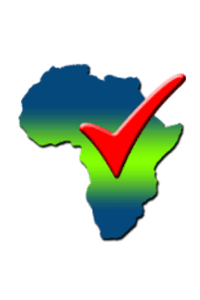
Producers are encouraged to download the free reporting app for different pests, diseases and migratory. The “Biosecurity Africa” Application lets you instantly and quickly report pest sightings for quick decision making and rapid response to outbreaks.
Important pests that can be reported through this app includes (just to name a few):
Everyone can help map pests by using your phone to submit sightings. GPS coordinates are captured automatically, and you can record sightings in online or offline mode. You can even place a marker on a map if you had a sighting but could not capture it in the field.
By using the “Biosecurity Africa” application, you help to establish distribution maps which will be linked to weather data for forecasting and Early Warning Alerts on your mobile device specific to your crops. This is an important step in managing invasive species or pest outbreaks and track migratory patterns across the African continent. Your cooperation will lead to effective surveillance, control and eradication.
Follow this link to download the app on Android, IOS or Huawei: http://www.cropwatch.africa/biosecurityafrica-apps/
Biosecurity Sighting Application Quick Steps
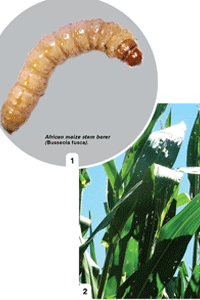
The African Maize stem borer (Busseola fusca) is one of the most severe pests of maize in Africa. To screen future maize varieties for resistance, producer’s urgent support are needed to collect representative larval populations. This is required to protect future maize crops against this stem borer.
Please contact Pfano Mbedzi of the Grain Research Programme team at FABI, University of Pretoria at Pfano.Mbedzi@fabi.up.ac.za, when you spot maize damage by this pest in your field. Pfano Mbedzi will arrange the collection of the larvae. Please include the following details when you contact us:
Alternatively, you can download the Biosecurity Africa app for free on the following link: http://www.cropwatch.africa/biosecurityafrica-apps/ and fill in the required information.
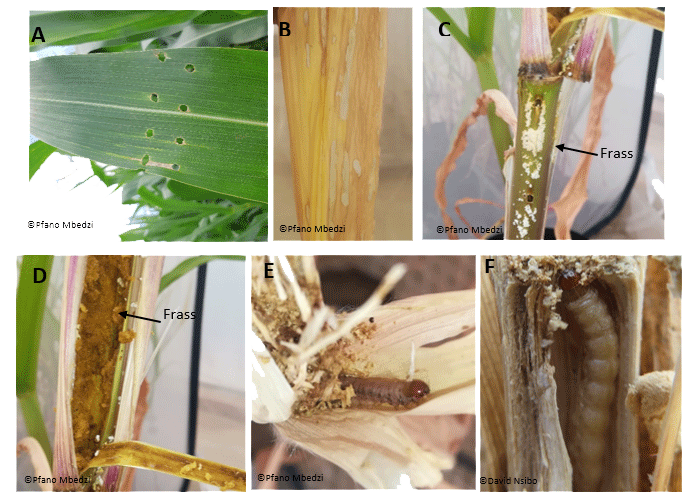
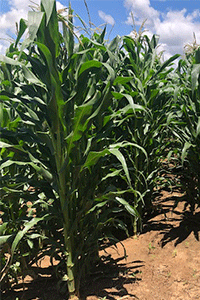
Grain SA study group members under the watchful eye of Farmer Development Coordinator, Mr Jerry Mthombothi have proudly shared their magnificent maize crop. Ndinda Mkhonza and Simeon Xaba, from Hereford East in Mpumalanga are members of the Lubumano Study Group, and Bagezile Mhlanga, Sibongile Madela, Norah Nhlabathi, and Thembelihle daughter of Ndoda Alfred Nhlabathi are all from Intabababomvu in Mpumalanga and form part of Grain SA's Intababomvu Study Group.
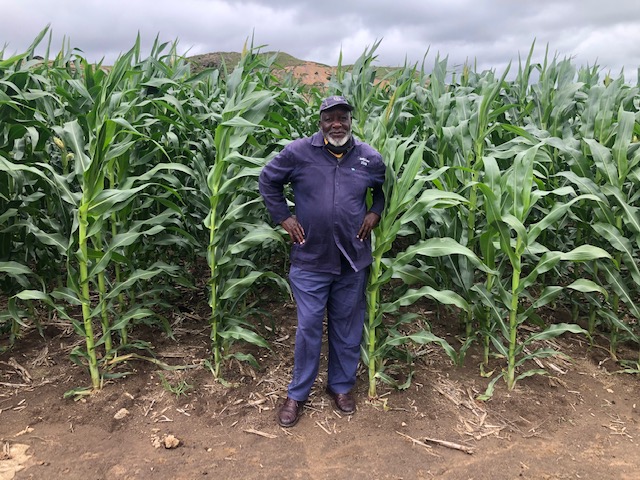 |
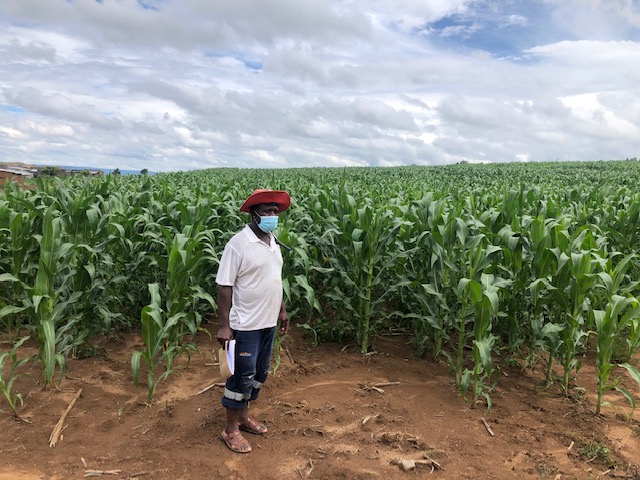 |
|
| Ndinda Mkhonza | Simeon Xaba | |
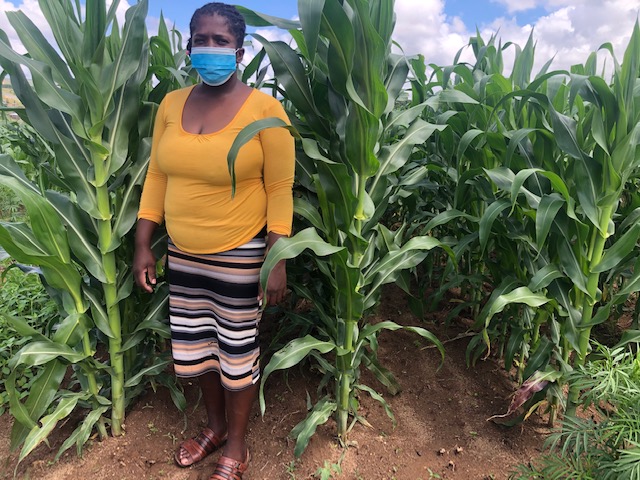 |
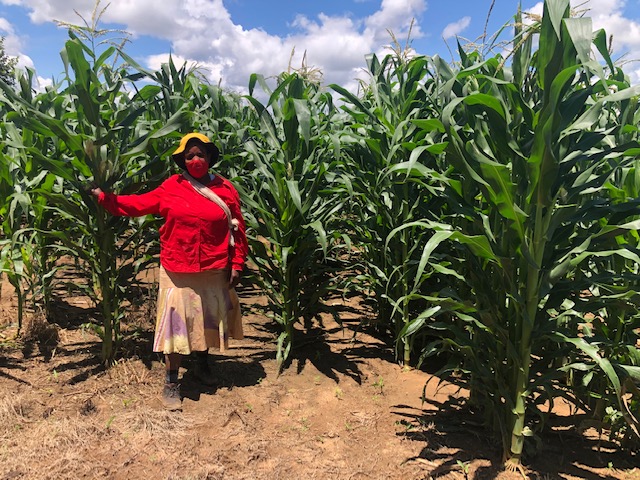 |
|
|
Bagezile Mhlanga
|
|
Sibongile Madela
|
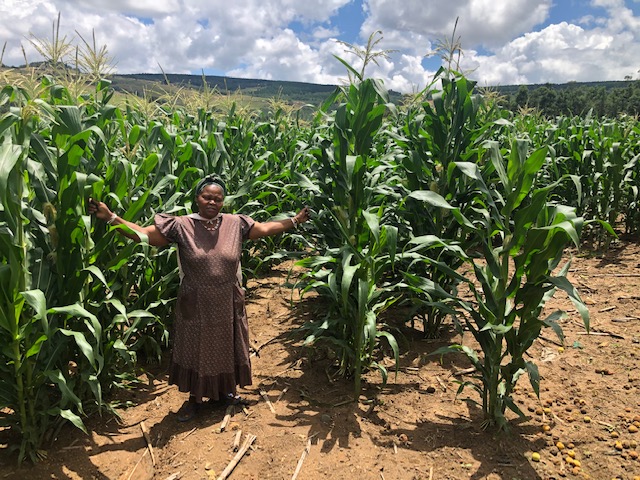 |
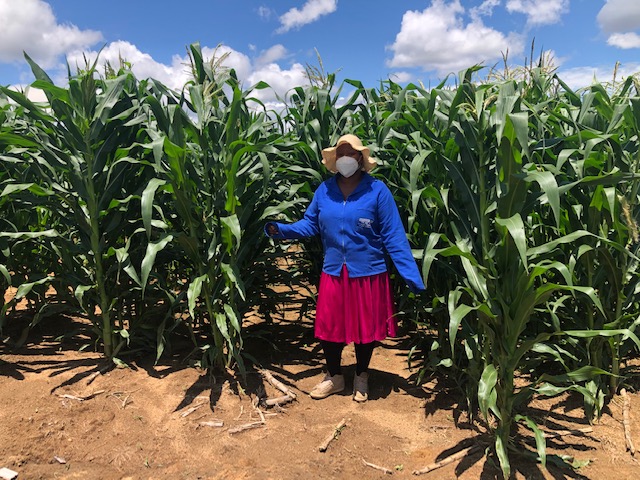 |
|
| Norah Nhlabathi | Thembelihle daughter of Ndoda Alfred Nhlabathi |
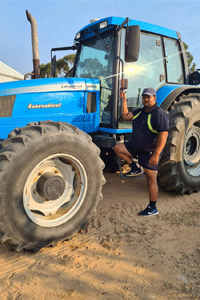
Whernit Dirks, a 31-year-old black commercial farmer from Piketberg, Western Cape always had this dream since a teenager. In school, he always had something to sell to the children, like chips, sweets and ice-lollies. Therefore, the entrepreneurial spirit was always there. “As a young boy, I always believed that I would be a businessman one day. Not knowing at that stage it would be a farmer.”
When the opportunity came around to be a farmer, Whernit knew this was what he wanted to do for the rest of his life. As a teenager and after leaving school, he worked as a farmworker. In 2006, Whernit joined Windheuwel farm in Piketberg. Later that year, the owner of the farm gave Whernit the opportunity to start farming on his own. He could pick three half-breed ewes to rear themselves. Stephanus Richter experienced the commitment to farm from Whernit and leased 100 hectares of his land to him.
In 2010, seeing the success, the owner offered him an additional 600 hectares to lease. His achievements in commercial farming was “Young farmer and New Harvest Winner of the year – 2018”. Then he also did short courses in training through Grain SA and leadership in the connection economy.
Genadeshoop farm is built on hard work and commitment from each member of the business. With mentorship from neighbouring farmers, it gave Whernit the opportunity to mentor other black farmers and gave back what he has learned and experienced in the farming business. He still chooses to lean on the wisdom and understanding of other farmers. “I have come this far because of building relationships and not broken walls.”
My belief is also that agriculture brings people together regardless of race and colour. “In this sector you need help and assistance from others and also institutions. I call it friends in agriculture.”
“It makes me think, many people today want land, but once you in a farmer’s shoes, you realise that it is not that easy.”
“After the past five dry years, with 2017 being the driest year in over 100 years, I never stopped making plans to continue farming and arrive at a sustainable farm. Because agriculture is my passion, I try hard to explore new opportunities every day that can always take the farm forward through farming. The last harvest season was a very good season with an above average harvest. The last harvest year that is closest to 2020 was 2014, so we are very grateful for the wonderful year. The 2021 season also looks very promising. I trust we will have a great season again.”
As Grain SA Executive of Region 30, I can proudly say that Whernit Dirks is one of the most committed members of Grain SA. He supports most farmers in the region with advice as well as mentoring them. Farmers can learn a lot from his experience in the farming business and he believes in developing a sustainable business for the future generation. With farmers like Whernit Dirks, and with the right attitude and approach in the agriculture sector, we can bring a nation closer in South Africa.
So Whernit, well done on your achievement!